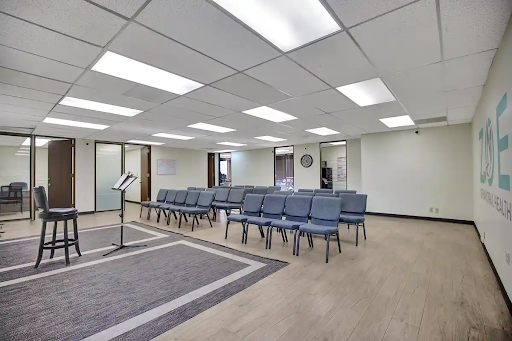The Struggles of Fentanyl Abuse
Addiction is a raging, hungry monster, consuming the lives it overcomes and providing addicts with little to no ways out. Fentanyl addiction is one of the worst of the beasts, as fentanyl is very cheap and easy to become addicted to. Addiction is a very stigmatized concept and many people misunderstand it, which can be very isolating to those who want to quit or seek treatment for fentanyl addiction.
It can be difficult to overcome fentanyl addiction, especially when addicts feel as though they have no resources to turn to. However, there is hope. Rehab centers as well as various other resources can help with fentanyl addiction, withdrawal symptoms, and all of the hurdles that come with the long, painful decision to pursue sobriety.
Can fentanyl use lead to addiction?
The short answer is yes — it can, and easily. Fentanyl can be addictive in as little to three days of consistently taking it and at most seven: and being that it is often a prescription drug, it can be easy to get addicted and much, much harder to quit.
Signs and Symptoms of Fentanyl Abuse
Fentanyl is an opiate, a pain-relieving drug that is often prescribed for issues such as chronic pain and post-surgery relief. It is highly addictive and can be hard to avoid with health complications, as it is not uncommon for doctors to give their patients prescription opioids.
So, how can we spot the signs of fentanyl addiction, whether it be in ourselves or in a loved one? Opioid or fentanyl addiction often manifests in the following physical and mental symptoms:
- Rapid and unexplained weight loss
- Vomiting and nausea
- Constipation or diarrhea
- Disorientation or confusion
- Depression and anxiety
- Mood swings
- Disconnect from reality

As for behavioral symptoms, fentanyl addiction can appear as follows:
- Self-isolation/social withdrawal
- Stealing, lying, and borrowing money (or requesting to)
- Slurred speech
- Lack of coordination
Over time, fentanyl addiction can not only lead to health complications but can create problems with family members, loss of employment, expulsion from school, and an overall damaged psyche. Not to mention respiratory depression, permanent brain damage, collapsed veins, and multiple hospitalizations that can accompany fentanyl abuse. If left untreated, fentanyl addiction can ruin a person’s life, even if an overdose never happens.
Rising Overdose Deaths
Opioid addiction is the fourth highest addiction in America, only headed by alcohol, marijuana, and nicotine. Even in 2021, fentanyl overdose deaths increased by 30% since 2020. Further, fentanyl is a powerful synthetic opioid that is almost easy to overdose on, as a small dosage is potentially lethal. Drug dealers often mix fentanyl with other drugs, and unknowingly consuming doses above 2 mg of fentanyl can lead to overdose. This is the reason opioids are a leading cause of death in overdoses, and it only continues to increase with time and the increased distribution of illicit fentanyl.
Don’t Wait Until the Effects Get Worse

As time goes on, addiction doesn’t wane, and only gets worse: your body craves more and more of the drug, which puts users at risk of overdose when they take more than they can handle. Further, fentanyl can cause respiratory problems, which can increase hospital visits. Over time and in extreme cases, fentanyl addiction’s effect on the body can lead to either a coma or death.To prevent extreme cases such as overdose or permanent brain damage, it’s important to seek help early, before the damages are irreversible.
Fentanyl Withdrawal Symptoms
Fentanyl withdrawal symptoms can be extremely unpleasant, especially if the quit is abrupt. The body reacts strongly when it is deprived of a drug it’s used to intaking, and can cause complications that might be next to impossible to deal with alone.
Physical withdrawal symptoms manifest in the following ways:
- Intense cravings for fentanyl
- Nausea/vomiting
- Dysphoric mood
- Sweating
- Insomnia
- Aching muscles/joints
- Hot body temperature or fever
These symptoms can range from unpleasant to extreme, and weakens the resolve of anyone trying to quit. That’s why it’s important to seek treatment.
How is fentanyl addiction treated?
There are different ways to treat fentanyl addiction, whether at home or with a doctor. It is not generally recommended to quit cold turkey without the support of a doctor or therapist, because withdrawal symptoms can cause extreme pain and discomfort. This is why addicts find it so hard to quit in the first place, and it’s a hard truth for humans to accept that we might need help.
Rehabilitation centers across the nation strive to aid addiction treatment and create a safe space in which addicts can detox with 24/7 monitoring. Post-withdrawal, rehabilitation centers also ensure that the patients are well taken care of mentally, and provide a therapist as well as support groups and other activities that stimulate the brain, introducing the joy to life that drugs cannot make permanent. Addiction is isolating, but seeking addiction treatment is unifying and creates a sense of community within the recovery process.
What You Need from a Fentanyl Addiction Treatment Program
It can be intimidating to choose a rehabilitation center, especially one that suits your individual needs and care requirements. Further, it can be frowned upon in general to seek treatment for addiction, as it is often not seen as a real concern and non-addicts cannot comprehend not being able to quit without aid.

Don’t Ignore The Signs
Much like physical sicknesses and ailments, addiction only gets worse the longer you go without treatment or care from a medical professional. If demonstrating symptoms of fentanyl addiction and you’re not sure how to quit, it’s important to seek out care as soon as possible, and there are many rehabilitation centers this is possible at.
Residential Inpatient Care at Zoe Behavioral Health
Located in southern California, Zoe Behavioral Health is a recovery center geared towards recovering addicts and provide addiction treatment programs for any sort of addiction-related ailments. They ensure that patients are well taken care of before, during, and after the recovery process, and have a team of medical professionals that ensure access to 24/7 care.
Zoe Behavioral Health offers a variety of addiction treatment programs, including inpatient and outpatient care, as well as specific care geared towards the addiction their patients are struggling with, including a fentanyl addiction treatment program.
Outpatient vs. Inpatient – Which is right for you?
When seeking treatment, it may not be clear whether an inpatient or outpatient treatment program is right for you. The big difference is that with an inpatient, you’re required to stay in a hospital, while with an outpatient, you are not.

Here is a list of differences between the two:Outpatient programs:
- You stay at home, with check-ups here and there with the medical professionals tending to you
- You only go into the rehab center for routine check-ins and therapy sessions
- You detox and go through the withdrawal symptoms at home
Inpatient programs:
- You are in need of medicine and care, attended to by staff and medical professionals
- You stay within a hospital or other facility with around-the-clock medical attention
- The stay for addiction treatment can last anywhere between a week to, more typically, 30 days
Depending on the situation, Zoe Behavioral Health can help you determine which treatment program may be best for you.
The Process of Treating A Fentanyl Addiction
Zoe Behavioral Health focuses on detox, rehab, and aftercare as its core steps of fentanyl addiction treatment.
Stage 1: Detoxing
The detox stage focuses on the withdrawal process and dealing with those withdrawal symptoms, as you’re attended to 24/7 by Zoe’s team and given all you need to ensure that the painful process is as comfortable as it can be for you. Further, this consistent attention ensures the risk of relapse is low.
During this time, your body is adjusting to not receiving regular doses of fentanyl. These symptoms can be painful, but doing this in a rehab center can ensure you’re not alone during this process.
Stage 2: Rehabilitation
Rehabilitation, or dubbed rehab, is the adjustment to a life without fentanyl addiction and getting used to what that might look like going forward. During this time at Zoe Behavioral Health, you attend group therapy as well as individual therapy. This is when the inpatient vs outpatient option comes in handy, as they give their patients the option of whether they want to stay in Zoe’s facilities or go home to continue their treatment there.
Stage 3: Aftercare
This is the process that takes place after the rehabilitation stage, in which Zoe offers resources after the intensive care, including maintaining contact with the therapist patients saw during rehabilitation and providing resources to maintain sobriety and control the intense cravings that come with detoxing.
Inpatient Program
Zoe Behavioral Health’s inpatient fentanyl addiction treatment programs focus on providing care for their patients 24/7 and create spaces such as group therapy, group activities, and healing activities such as yoga. Patients usually stay around 1-3 months, but the stay can be much shorter depending on the severity and amount of treatment needed.
If reluctant to leave certain things behind such as a partner or a pet, Zoe Behavioral Health offers couples rehab as well as pet-friendly facilities to their patients.
Therapy and Support Groups
Support groups and therapy are a great way to ensure a community of people who can help with treatment, as other patients seeking treatment have been through similar circumstances and provide a sense of unity in the recovery process.
Post-rehab, these communities often fester into friendships with the common thread linking the group of people together and serves the purpose of giving addicts shoulders to lean on.
Outpatient Care and Ongoing Treatment
If it’s too difficult to leave home behind, outpatient care is always an option. Zoe Behavioral Health provides as much help as they can if patients choose to take this route, but it’s important to remember that due to the severity of withdrawal symptoms, choosing this option can backfire.Post-rehabilitation can be difficult, and while maintaining sobriety is the goal, Zoe Behavioral Health doesn’t leave you stranded if you are to relapse. They have a call center open 24/7, and provide therapy and resources for their patients post-therapy.

Zoe Behavioral also emphasizes that sobriety isn’t easy, and that relapse doesn’t mean failure. There are always hurdles to overcoming fentanyl addiction, and that can include relapsing. This doesn’t mean the recovery process was a failure, or that you should give up entirely.
Other Resources
If you or a loved one is potentially suffering from fentanyl addiction or any other type of addiction, the Substance Abuse and Mental Health Services Administration (SAMHSA) has a national helpline that is operated 24/7:
1-800-662-HELP (4357)
They provide help to both English and Spanish speakers and refer patients to local help centers and therapists as well as community-based organizations.
Further, this link offers specific help to those addicted to opiates such as fentanyl: https://dpt2.samhsa.gov/treatment/.
And if addiction has led to suicidal thoughts or ideations, the national suicide line is available all day, every day:
988
The Importance of Rehab and How Zoe Behavioral Health Can Help
Rehabilitation ensures that patients do not have to go through the long, difficult process of overcoming addiction alone, and post-rehab, over 80% of patients report maintaining their sobriety and feeling overall happier in their day-to-day lives. Further, rehab can truly turn your life around, and ensure that life is lived to the fullest, even without the euphoria drugs such as fentanyl can provide.

It can be hard to accept help or seek it out, but in order to maintain a happy life, sobriety, and meaningful relationships with family, rehabilitation is the first step. Zoe Behavioral Health can provide that all, as well as create a sense of independence moving forward and maintaining these relationships. There is a lot to gain from rehabilitation; it’s just about taking the step to admit that help is needed, and ask for it.
